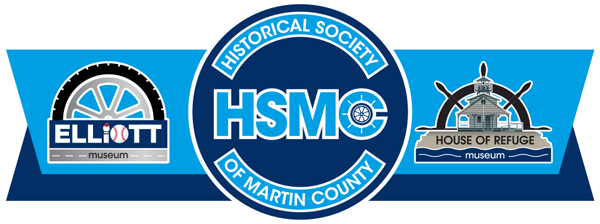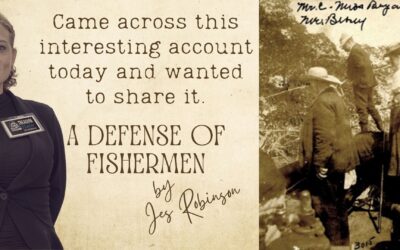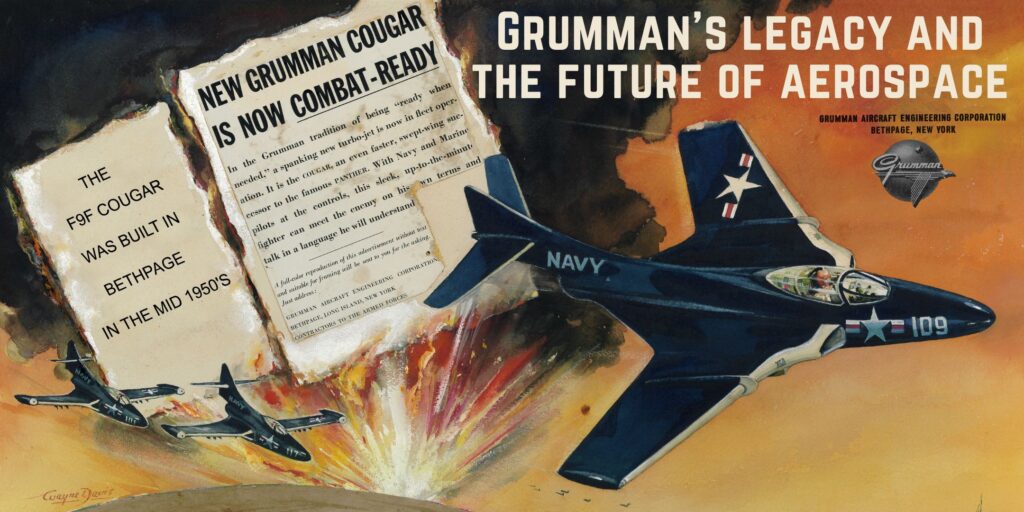The Curator’s Corner
THE HISTORICAL SOCIETY OF MARTIN COUNTY
keeping you up to date on what is going on AT THE ELLIOTT!
Treasure Finds
From Jes Robinson
A Collection Of Works By Roger Vail
We are the lucky stewards of a collection of works by Roger Vail. I immediately knew they were something special!
A Defense of Fishermen
It all started with the find of a book in our Lawyer’s Books collection… A Defense of Fishermen by Former President Grover Cleveland.
Monthly Updates 2025
From Jes Robinson
JUNE - CELEBRATING MARTIN COUNTY’S HISTORY AND ART
ROGER VAIL EXHIBIT, GRUMMAN’S LEGACY, AND HISTORIC PRESERVATION MONTH
Martin County is buzzing with excitement this week as we continue to mark Historic Preservation Month, and the HSMC is pleased to offer several new exhibits this month. Digging deep into our Art Vault, we have uncovered an artist almost forgotten to time. Once a major participant on the international art stage, the Roger Vail exhibit is truly something to witness. Joined by the opening of both the Grumman and the 100 years of Martin County exhibits, we have quite a few new things to show you.

Roger Vail: A Visionary Artist’s Exhibit Opens in Martin County
The newly installed Roger Vail art exhibit brings a fresh perspective to Martin County’s cultural scene. Vail, a self-taught artist known for his bold use of color and fragmented compositions, created works that reflect deep emotion, social commentary, and personal expression. His artistic journey was shaped by a diverse background, including time spent as an entertainer, actor, and even a shipyard worker before turning to painting in 1954.
The exhibit showcases Vail’s unique approach to painting, highlighting his ability to capture raw human experiences through vivid imagery. His work has been displayed internationally, from London to Bogota, and the works currently on display are part of the Historical Society of Martin County’s permanent collection, acquired in 1968.
Grumman’s Legacy: A New Exhibit Honoring Aerospace Innovation
Alongside Roger’s breathtaking display, the Historical Society of Martin County is unveiling a new exhibit dedicated to Grumman’s legacy. Known for its engineering excellence, Grumman played a significant role in the aerospace industry, with its presence at Plant 77 and Witham Field transforming Stuart into a hub for aviation and defense innovation. The exhibit highlights the company’s contributions showcasing the craftsmanship and dedication of the employees who helped shape Grumman’s impact on the industry.
Even decades after the company’s departure, the Martin County Grumman Retirement Club continues to meet, preserving the camaraderie and commitment that defined their time at Grumman.
Historic Preservation Month: Honoring Martin County’s Heritage
May is Historic Preservation Month, and Martin County is celebrating with a series of events designed to raise awareness about the importance of preserving local landmarks and stories. The Martin County Historic Preservation Board has organized activities throughout the month, including lectures, guided tours, and open houses at historic sites such as the Mansion at Tuckahoe, the House of Refuge, and Captain Sewall’s House. These events provide residents and visitors alike with opportunities to explore the county’s architectural and archaeological treasures while learning about the efforts to maintain them for future generations.
One of the highlights of the month is the Preservationist of the Year Award, which was presented at The Elliott Museum on May 17. This prestigious recognition honors individuals who have made significant contributions to historic preservation in Martin County. The award ceremony serves as a reminder of the dedication required to safeguard the county’s unique past.
As Martin County continues to celebrate its history and artistic achievements, the opening of the Roger Vail exhibit and the new Martin County History displays serve as powerful reminders of the importance of preserving both cultural and industrial legacies. Whether through exhibits, events, or individual efforts, the commitment to historic preservation ensures that Martin County’s story remains vibrant for generations to come.
May - This year has been a whirlwind of activity in the collections storage areas
This year has been a whirlwind of activity in the collections storage areas as we focus on the monumental task of physically touching and examining every single item in our inventory. The effort, though challenging, has proven to be incredibly rewarding, allowing us to reorganize, reassess, and ensure each piece is properly preserved and documented for future generations.
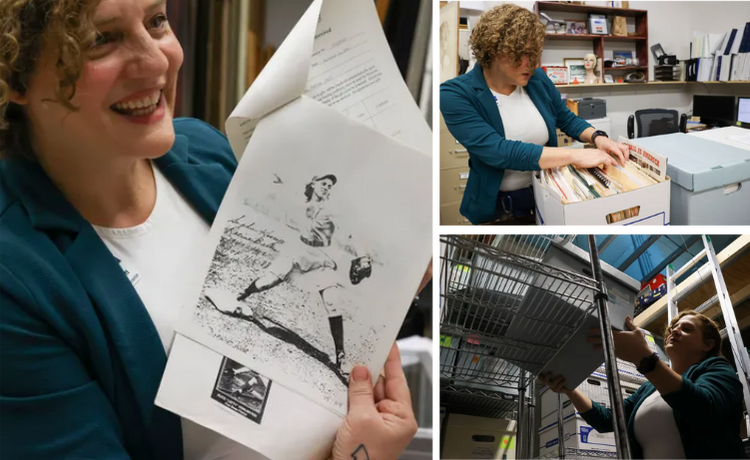
Our journey through the collections has brought forth fascinating discoveries, and one standout moment was the deep dive into our extensive baseball collection. With the invaluable assistance of our dedicated volunteer, Branden Hummell, we were able to meticulously review and rediscover treasures that make our collection truly remarkable. From vintage photographs and signed memorabilia to stories that weave the tapestry of baseball history, our work has reconnected us to the cultural significance of America’s pastime.
As spring training transitions into the regular season, we’ve been inspired to envision what our next baseball exhibit could look like. Our team has been brainstorming themes that would captivate visitors and provide them with fresh insights into local baseball’s rich and storied history.
One intriguing concept is the Ty Cobb–Al Stump controversy, which explores the complicated relationship between the legendary player and his biographer, shedding light on the duality of perception and truth in sports history. Ty Cobb remains one of the most polarizing figures in baseball, and this exhibit could challenge visitors to reflect on how legends are constructed and deconstructed over time.
Another idea that has sparked interest is the story of farm teams in Florida, which highlights the Sunshine State’s role in developing future baseball stars. From small-town fields to bustling minor league stadiums, Florida has served as a breeding ground for talent and a gateway for dreams. This exhibit could not only shine a spotlight on the players but also delve into the communities and landscapes that shaped their journeys.
Both concepts have the potential to engage visitors in dynamic ways, whether through interactive displays, rare artifacts, or oral histories. As we continue to refine these ideas, we welcome input and suggestions from our community—after all, baseball is a shared experience that transcends generations.
In the months ahead, we’ll remain focused on our inventory work and continue to uncover hidden gems in the collection. Every item we touch has a story to tell, and we’re committed to bringing those stories to life through thoughtful exhibits and programs.
We extend heartfelt thanks to our supporters, volunteers, and partners whose dedication and enthusiasm have been instrumental in our achievements this year. Together, we’ll ensure that the legacy of baseball—and all the collections we steward—continues to inspire and educate.
April - proud to present a new exhibit showcasing the works of ten remarkable artists
This spring, HSMC is proud to present a new exhibit showcasing the works of ten remarkable artists, each with their unique vision and contributions to the cultural tapestry of our community. These artists, whether local treasures or inspired by the lush landscapes of Florida, bring to life stories of heritage, resilience, and artistic exploration.
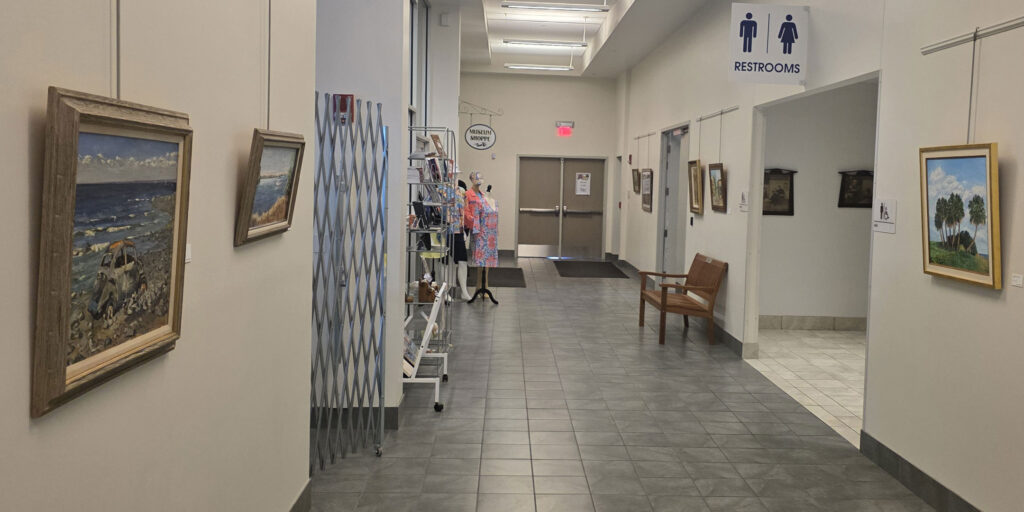
Among the highlights is Haitian House by Lynn Ruskin, also known as Caimite. Her vibrant depiction of a Caribbean-style beach house evokes the warmth and allure of tropical life. Ruskin’s work stands as a testament to the connections our museum has fostered over decades with artists whose roots stretch deep into the tropics.
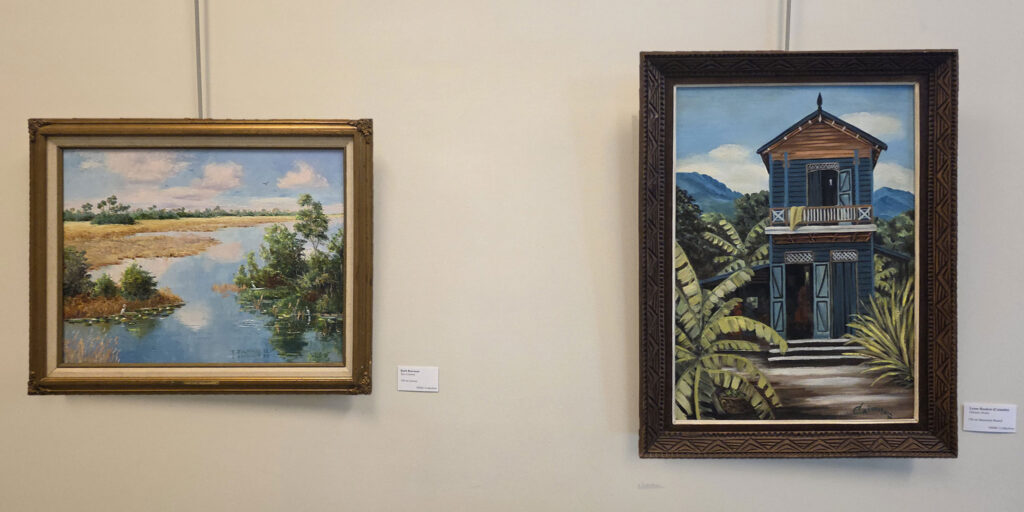
George Gach, a distinguished artist and sculptor of Hungarian origin, adds another layer of depth to the exhibit with his piece Beach Bug. Gach’s ability to capture scenes of everyday life and imbue them with charm and character speaks to his versatility as an artist. His work is internationally recognized and serves as a bridge between cultural traditions and artistic storytelling.
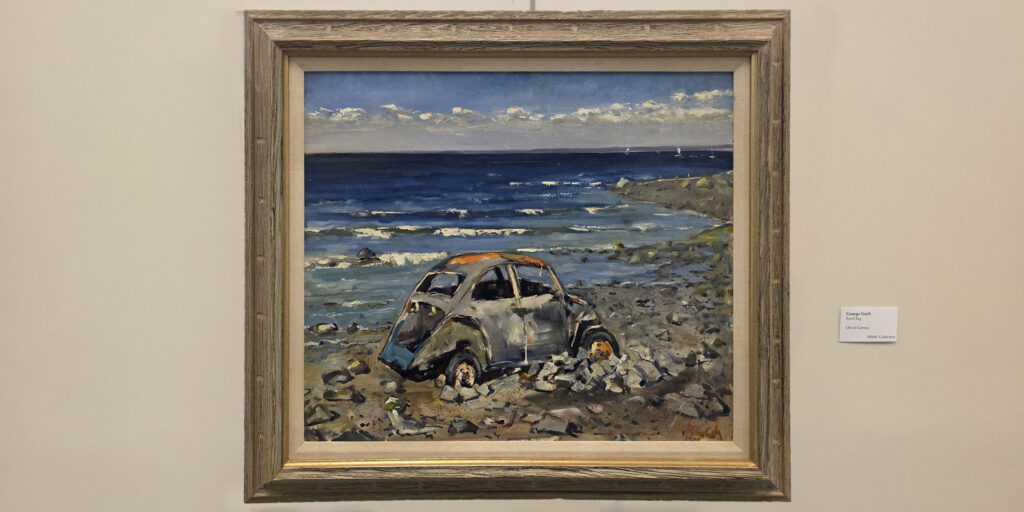
We also feature Ruth Bowman’s serene landscapes, such as Savannah Flats, which captures the quiet beauty of southern savannahs, and Cristina de la Vega’s evocative painting Palms, celebrating Florida’s iconic greenery. These pieces not only pay homage to the natural environment but also reflect the artists’ dedication to preserving its beauty through their craft.

As I dive into inventory and familiarize myself with the art collection, I am continually inspired by the talent and passion of these artists. Their works invite us to slow down and appreciate the world as they see it, whether it’s through the quiet stillness of a stormy afternoon in Christopher Spain’s electric photography of the House of Refuge or the charming vignettes of everyday life in works by Walter Brightwell.
This exhibit is not just an opportunity to display these incredible works from the HSMC Vault but a moment for us to reflect on the relationships cultivated by HSMC with the artists who enrich our lives. I hope visitors find as much joy and meaning in this little collection as I have in preparing it.
April - I'm working on so many things to surprise and delight you
I wish I could bottle the feeling I have when I drive over the Ten Cent bridge. I look to the south and see the sheer beauty of man’s creation, but the momentum is building for the dip into Sewell’s Point proper and then the slow rise over the Ernest Lyons’ bridge to see this tiny sliver of an island where the silhouette of the House of Refuge is revealed.
As I can’t help but look to the House and count her pine and palm trees, I set my intention for the day. I will be a bridge to my community, a bridge to students who wish to learn and most importantly, a bridge to the past. Let us never forget her.
I am so inspired by the conversations we have as you walk through the museum. I am continually reminded that this is our place, your place, everyone’s place to find community. Thank you.
I’m working on so many things to surprise and delight you, it would be greedy for me to try to share it all here. Please look to our website for a full archive of the research I’m doing to bring you the most entertaining and meaningful stories, just like you have come to expect from the Historical Society of Martin County. Happy 100th Birthday, MC!
March - exciting changes to permanent exhibits
“Can you believe I’ve had my one-year anniversary this past month? Well, I can’t—time flies when you’re having fun! In the last year, I’ve made solid friendships, learned more about my community, and discovered so many people who are just like me—people who want the best for our community and who are not afraid to work hard to do the right thing. Each day, I am grateful to add my labor and skills to the pool of those working to preserve our memories of this area and sustain the links to the past that help to inform our future.
We have some exciting changes to permanent exhibits coming up soon, I welcome you in if you haven’t been to visit in a while! I am thrilled to be working on plans for the 100-year anniversary of Martin County and can’t wait to show you what we are working on to celebrate our beautiful county’s full century of existence. As I reflect on the work I have done for the HSMC over the past year, I can’t help but think of all those who have come before me—visionaries like Janet Hutchinson, whose portrait watches over all we do here—and feel so grateful to be here right now. Now is tomorrow’s history!”
February - Meet our Creative and Collections Director, Jes Robinson
As a dedicated member of the Curatorial Department, Jes plays a crucial role in the preservation, management, and presentation of the museum’s collections. Her primary focus areas include collections management, engaging with the public to preserve local history, and planning new exhibits.
Collections Management:
Jes oversees the meticulous cataloging and documentation of the museum’s extensive collection. This includes maintaining accurate records of each item, detailing its provenance, condition, and location within the museum. By implementing an intuitive inventory management system, she ensures that every artifact is accounted for and easily accessible for research, conservation, and exhibition purposes. This system enhances operational efficiency while safeguarding the integrity of the collection.
Indoor Climate Management:
Preserving the physical condition of artifacts is a top priority, and Jes applies her expertise in archival climate management to maintain optimal environmental conditions. She monitors and regulates temperature, humidity, and light levels within storage and display areas to prevent deterioration. Utilizing advanced climate control systems and data loggers, she works to protect artifacts from damage. Additionally, she conducts regular assessments and collaborates with conservation specialists to mitigate potential risks, ensuring the long-term preservation of the collection.
Planning New Exhibits:
Bringing the collection to life through engaging and educational exhibits is another vital aspect of Jes’s role. She collaborates with curators, designers, and educators to conceptualize and develop new exhibitions that captivate audiences and highlight the significance of the artifacts. This process involves extensive research, object selection, and the creation of compelling narratives that resonate with visitors. By incorporating innovative display techniques and interactive elements, she strives to create immersive experiences that foster a deeper appreciation for cultural heritage.
Beyond these core responsibilities, Jes is actively involved in departmental initiatives that enhance the museum’s operations and outreach. She participates in professional development opportunities, collaborates with external institutions on loans and exhibitions, and contributes to the development of educational programs and community engagement activities. Look out for updates from the Curatorial Department!
Through meticulous inventory management, vigilant climate control, and creative exhibit planning, Jes remains committed to ensuring that the museum’s collection serves as a valuable resource for future generations.
